No two washer modes are the same. Each washer mode affects your clothes differently, so you must understand how they work. The permanent press cycle mode is very common among washer models, but sadly, many washer owners don’t know what it does exactly.
The permanent press cycle puts your washer in low spin mode to avoid wrinkles. It begins the cycle with warm water to relax the folds and proceeds to rinse with cold water. It is best used for clothes with a synthetic or semi-synthetic blend.
This article will discuss how the permanent press cycle works and the types of clothing best suited for it. I will also include how this washer mode came to be, so read on if you want to know more!
Understanding the Permanent Press Cycle
Washer companies understand that clothes lose their appeal when they’re heavily wrinkled, and the clothes makers share the same sentiment.
Manufacturers were introducing fabrics treated with chemicals, so they were always wrinkle-free. Brooks Brothers also made a blend using wrinkle-free cotton, which was sold heavily in the market.
“Permanent Press” Used To Refer to a Fabric Type
These types of fabric were called “permanent press” fabric for it’s as if they were always permanently pressed. Over time, washers have appropriated the label for their washer modes. This is why you see permanent press or perm press in washer models today.
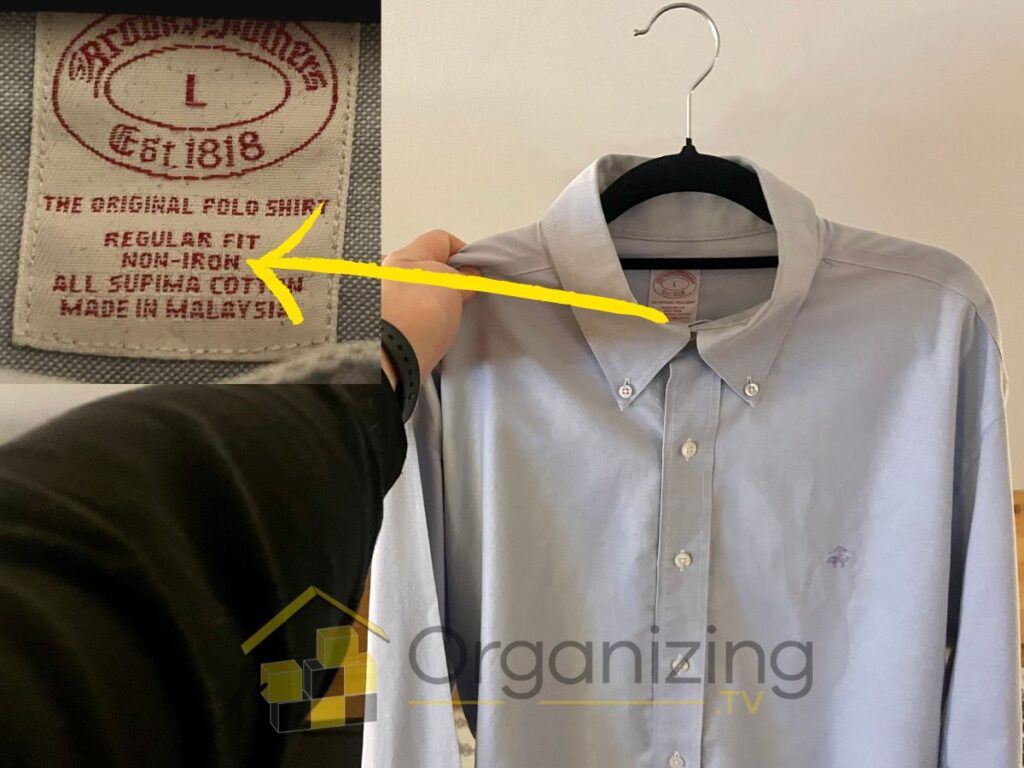
The permanent press cycle in the washer also responds to the need for wrinkle-free clothes.
When you press the Perm Press button on your washer, it releases a wave of warm water that relaxes the creases on your clothes. The science behind this is actually similar to how steam removes wrinkles.
Warm Water Soften Polymer Bonds
Within your fabric are bonds of polymer. These bonds maintain the integrity of your clothes. When the warm water interacts with these bonds, the bonds are softened due to the temperature. As such, the firmness of the creases is also softened.
Starting with warm water also allows the bonds on stains to wear out much faster. This makes them easier to remove.
It maintains the warmness of the water throughout half of the entire cycle. Creases are prevented from forming again by keeping the washer in low spin mode. A complication may arise if the washer sustains the warm water until the end of the cycle.
Warm Water May Shrink Clothes
In the process of turning fabric into clothes, the fibers and polymer bonds within are stretched out depending on the style of the clothes. With heat, the tension of the stretch is eased, which puts your clothes at risk of shrinking.
Do note that warm water doesn’t shrink your clothes immediately, unlike hot water. It will take several washes under warm water for substantial shrinkage to show.
Warm and hot water are also notorious for weakening the bonds in dye. If this happens, the colors in your clothes will fade. This is why the cycle is finished with a cold water rinse.
The entire cycle is about five minutes shorter than a regular cycle.
The Difference Between Permanent Press and Delicate Wash
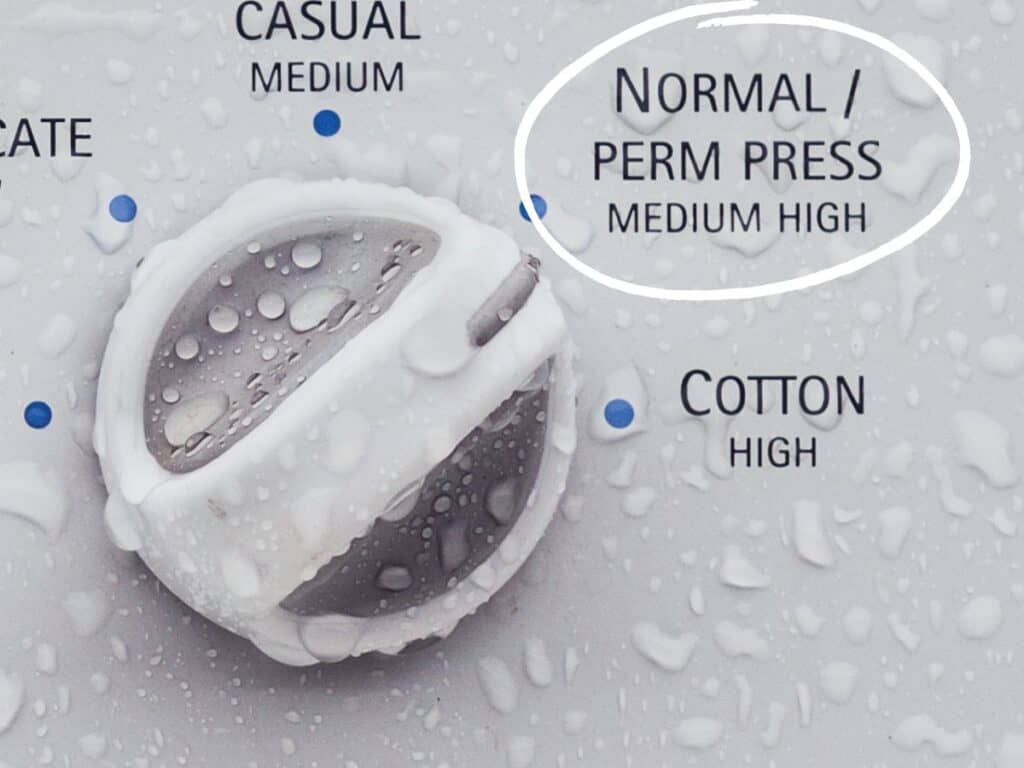
The permanent press cycle utilizes gentle spinning to ensure that creases don’t form and that the clothing maintains its size and color. The delicate cycle has the same goal, so confusing the two is easy. But what is the difference?
Among the primary differences between the two is that the permanent press is much less gentle on clothes than the delicate cycle, which is notoriously slow.
Delicate wash also does a better job of avoiding shrinking and fading by using cold water throughout.

While the permanent press is suitable for clothes you care about or are made of soft material, the delicate cycle is much better for really fragile items such as blankets, sheets, and even pieces of lingerie.
The water temperature for delicate wash is about 70 °F (21.11 °C) while the permanent press varies. The delicate cycle temperature is almost half that of the normal cycle, which registers an average of 130 °F (54.44 °C).
In some washers, the delicate cycle is called the gentle cycle.
When Do You Use Permanent Press?
One of the many reasons you use the permanent press mode is when the tag insists that you should. This is expressed via the symbols. For permanent press, the symbol is a bucket with water inside. Below the bucket is a single horizontal line.
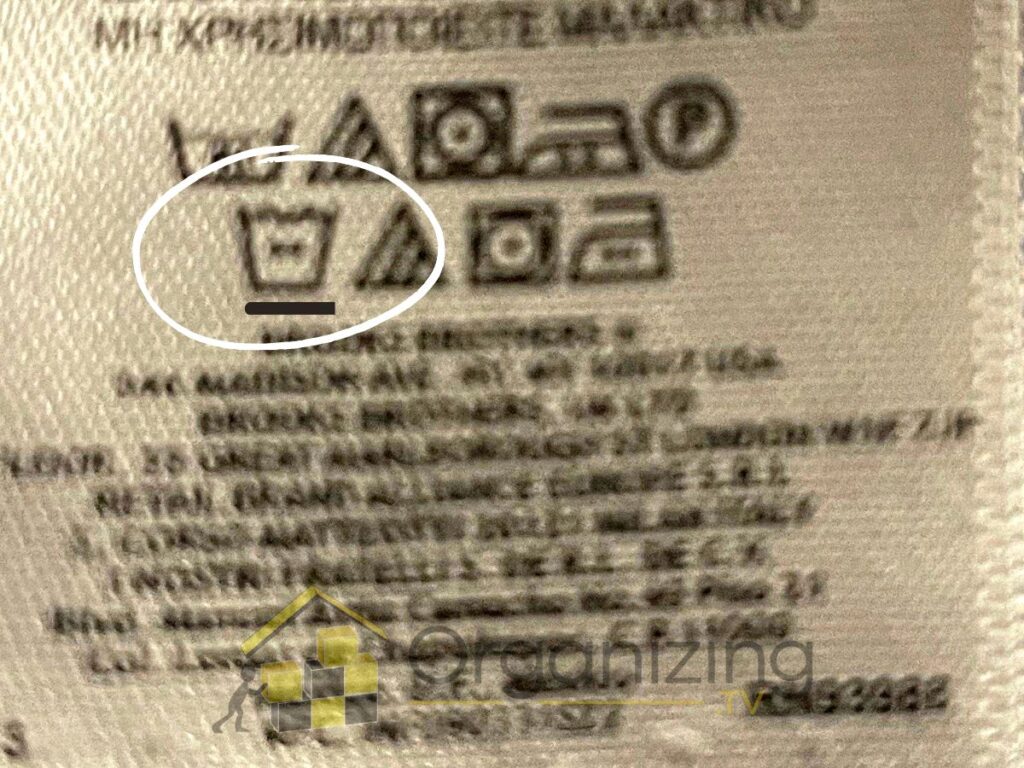
Be careful not to confuse this with the permanent press symbol for dryers which is represented by a square with a circle inside with a single horizontal line below.
The reason why this exists is that a lot of these fabrics are treated with chemicals. When used under the wrong washer cycle, they may lose the chemicals that give the product its signature cut, orientation, and style.
You can also use the perm press mode for clothes that cannot be ironed. On the tag, it’s symbolized by the iron icon with a big X across.
Furthermore, clothes made out of polyester, spandex, rayon, and microfibers have shrinking tendencies too. Perm press perfectly balances washing your clothes effectively and not damaging them.
You can also use a perm press for clothes that have a distinct color. If the color is the primary selling point of a piece of clothing, it’s best to avoid wash cycles that use hot water and rapid spinning. The perm press is the way to go.
Finally, you can substitute your regular wash cycle for the perm press if you’re looking for a quick wash. It hits the right balance of everything.
When Not To Use Permanent Press
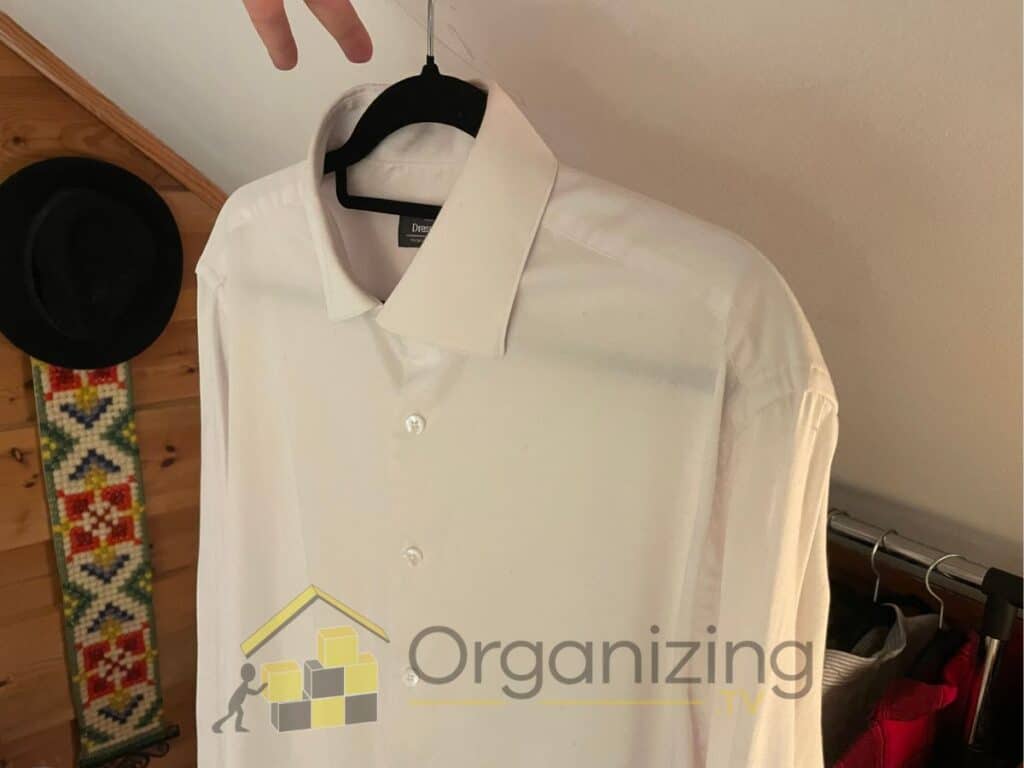
The permanent press feature is a useful innovation in washing machines. However, it’s not suitable for all types of fabrics. Some of the fabrics or clothing materials to avoid using this feature on include the following:
- Delicate fabric: As mentioned, lingerie, thin sheets, and blankets are too delicate for the permanent press. A water temperature that’s too high will surely damage the fibers.
- Thick fabric: You’re also better off not using a permanent press with denim, leather, and thick clothes, such as towels. The spin force is insufficient to really wash them.
- Dirty clothes: You’re also better off with stronger cycles with heavily soiled clothes. The permanent press is too gentle to really push them off your laundry.
- White clothes: It may not be the best to use the mode on white clothes as well. Stains are very obvious on white articles of clothing, and you need to ensure that your washer cycle deals with these stains as effectively as possible. A way to do this would be to expose the stain to much heat. Higher temperature loosens bonds faster which then removes the stain.
Always check the tag on the clothes to confirm if they’re suitable for a permanent press cycle.
Tips To Avoid Wrinkling in Washer
The permanent press doesn’t guarantee that your clothes will be free from wrinkling. Since it’s still a small space with many clothes clumped together, creases will naturally form.
If you really are committed to not seeing wrinkles on your clothes, here are some tips you can follow:
Consider Using the Delicate Mode
If your clothes are only lightly soiled, then consider washing them in delicate wash mode. Under this mode, the spinning force is very weak, and you won’t see your clothes clumping with each other and forming creases.
It’s also advisable for lightly colored clothes with hard-to-remove designs. Refer to the guidelines above to see if your clothes are compatible with the delicate mode.
Have Lighter Loads in Your Washer

As you may know, the more clothes you load onto your washer and dryer at once, the higher the chance for them to clump and form creases. A way around this would be to organize your clothes according to color, material, and purpose.
Some clothes may be washed on a particular day, while others can wait for a later time.
Pour a Cup of Vinegar Onto Your Load
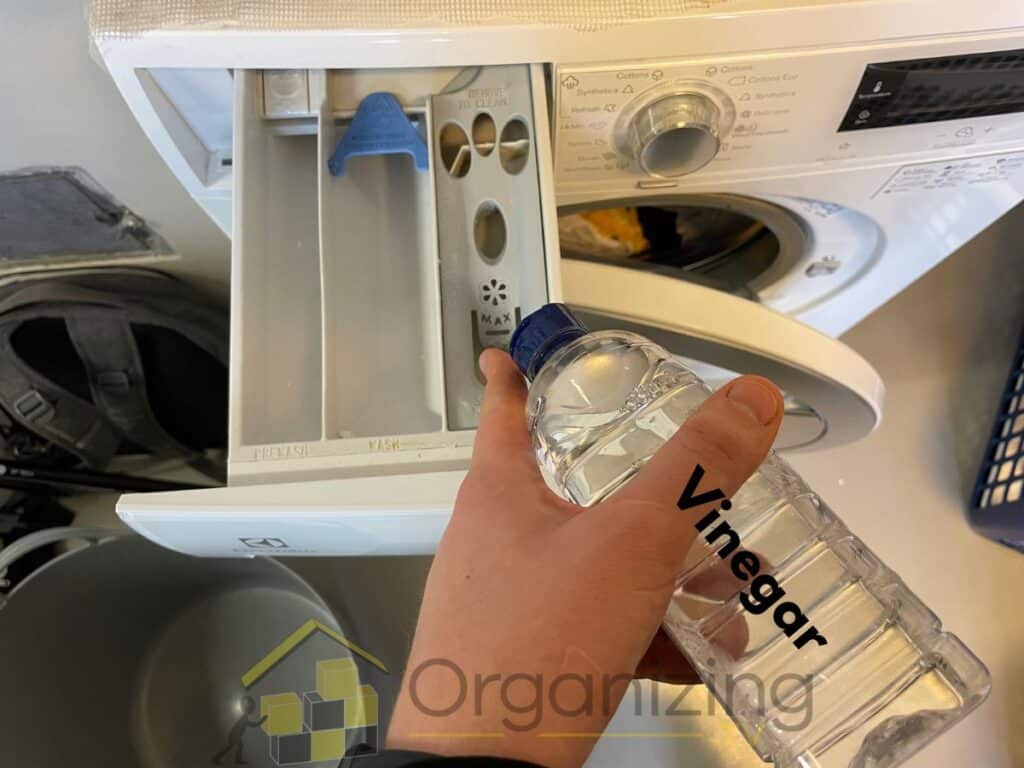
Vinegar’s acidity makes it an excellent anti-crease liquid that you can easily mix with your load. Worry not if you’re afraid it might cause the color to fade, as vinegar locks in color.
The smell also disappears after the end of the cycle, so there’s no need to worry about pungent odors. However, some washer models have instructions related to vinegar use, so consult your manual before pushing through with this method.
Pour Fabric Conditioner Onto Your Load
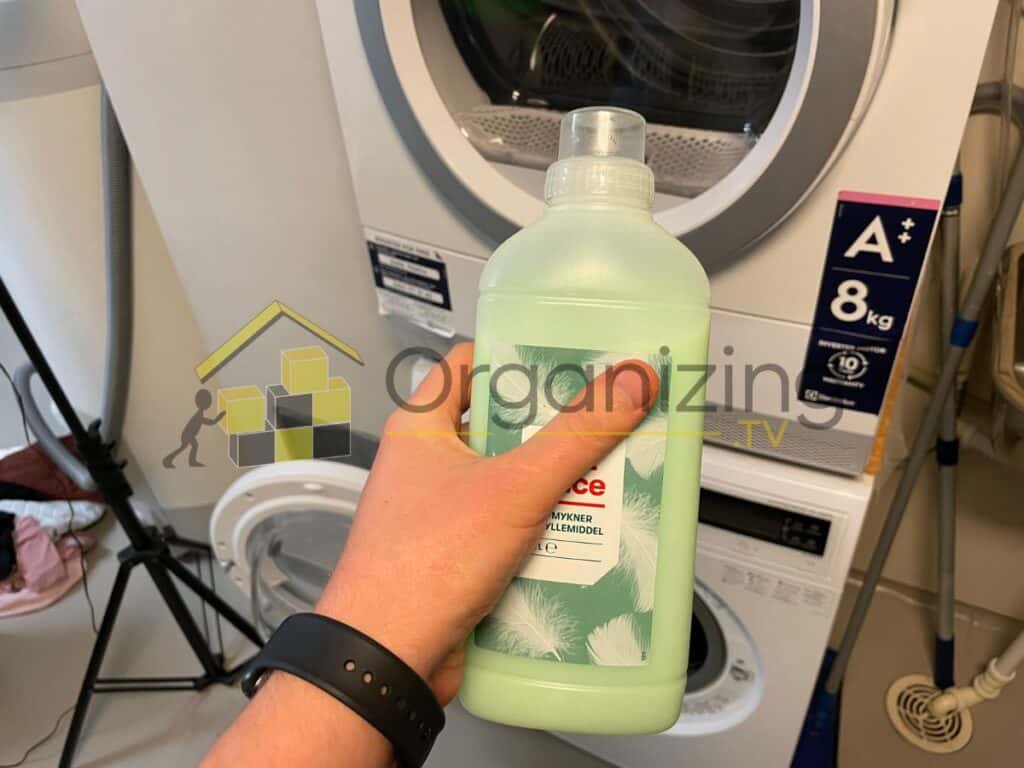
Fabric conditioner manipulates your clothes’ fiber makeup so they can look and feel better on you. Some products expertly soften the clothes, which makes them easier to manage. The stiffness of the creases is also naturally affected when you add fabric conditioner.
However, note that fabric conditioners may remove some prints on clothes. Say, for example, your clothes are hand-painted. You would want to avoid fabric conditioners as they’re usually strong enough to chip the paint off.
Understanding the Permanent Press on Dryers
While I won’t be giving an in-depth discussion of permanent press on dryers, you must have a basic understanding of the same mode on dryers as they are frequently used together.
The permanent press mode has the exact same goal of reducing wrinkles on your clothes. If under the permanent press, the washer starts with warm water, on the dryer, it begins with medium heat.
Like the washer, the dryer also has a cool-down period which is a counterpart to the washer rinsing your clothes with cool water.
The permanent press’s medium heat prevents your clothes from fading and shrinking faster. After all, the primary complaint with modern dryers is that they shrink and fade your clothes too much.
This dryer mode is perfect for lightweight cotton, linen, and some synthetic fibers. Unlike its washer counterpart, the perm press on the dryer is more accommodating towards natural fibers.
Tips To Avoid Wrinkling After Drying
You can avoid wrinkles on your clothes by following these tips.
Spread Them Out as You Take Them Out
After all the spinning and tumbling in the dryer, it’s very likely for your clothes to be heavily wrinkled. As you take them out, spread them out and stretch them gently. This is already forceful enough to remove some wrinkles.
After that, lay them on a flat surface. Avoid crumpling and throwing them on top of each other to form a pile. This will only worsen the wrinkling.
Hang Your Clothes With a Hanger
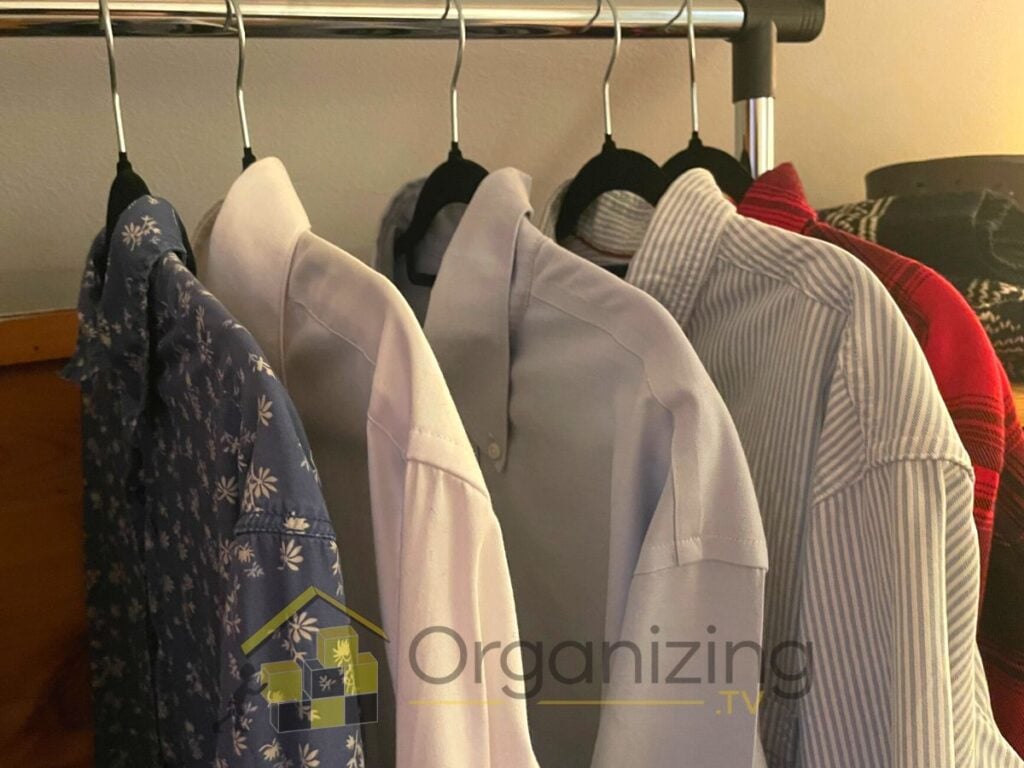
It’s also important that you hang your clothes properly. Orienting them as straight as possible reduces the possibility of folds forming, which is precisely what you want. Try to organize your clothes often as well.
If your closet is too packed, unnecessary folds may also form due to the contact.
Fold Your Clothes as Soon as You Can
It would also help to fold and store your clothes as soon as you can after you dry them. If you aren’t going to place them in a hanger after stretching and fluffing them out, fold them immediately. A prolonged fold also prevents wrinkling and creasing.
Check out my complete step-by-step guide to folding all your clothes here.
Tips To Avoid Wrinkling While Wearing
Believe it or not, you can avoid wrinkling your clothes unnecessarily. Just follow these tips and you’ll be fine.
Avoid Sitting on Your Clothes
If you’re wearing tops that go beyond your waist, you will likely accidentally sit on them. Be cautious about where you’re sitting, as exposing your clothes to weight for extended periods will definitely form creases that are hard to remove.
Crease-forming weights could also come from backpacks, boxes, furniture, and appliances.
Stretch Your Clothes Often
Wrinkles are so not in, and they aren’t expected to be for quite some time. A wrinkly outfit will surely turn the people you’re around off. You can stretch your clothes down whenever you sit down or stand up. This practice preserves the structure of your tops.
It’s also important that you devise an efficient way to pack your clothes whenever you travel. If you give each piece of clothing the right amount of space to breathe, they won’t bump into each other, causing unneeded wrinkles.
Learn more about how to fold your clothes when traveling here.
Conclusion
The permanent press mode’s primary purpose is to prevent wrinkles on your clothes. No one wants a wrinkly shirt, and if you really don’t want to be the center of unwanted attention at your next event, you must properly understand and use this washer mode.
If you want to learn more about your washing machine’s settings, check out this article.
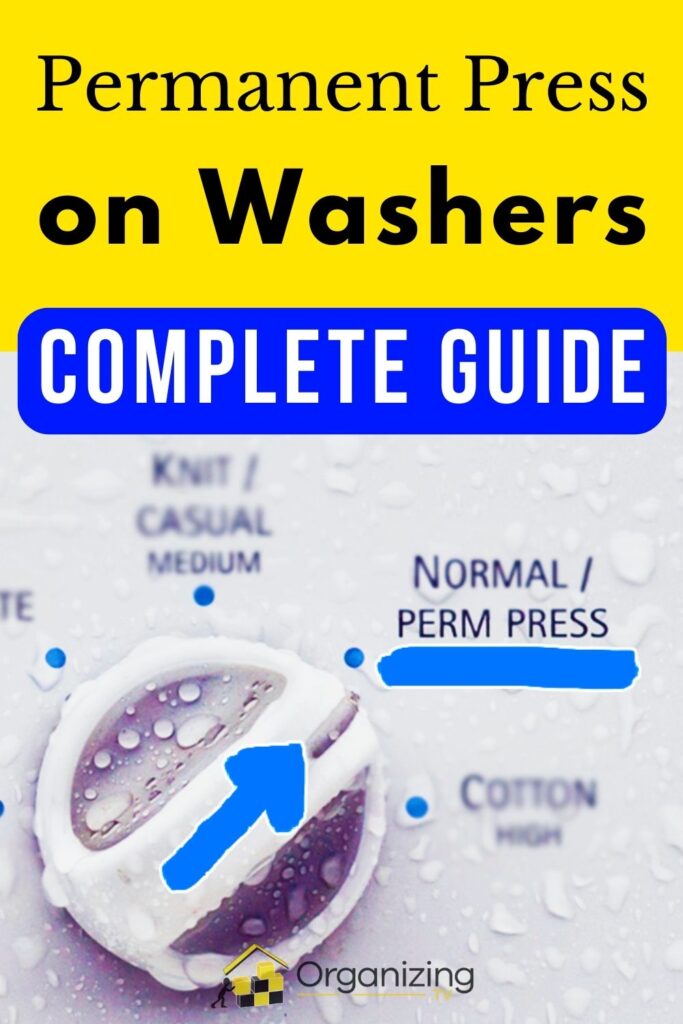

I’m an expert wardrobe organizer and a bit of a clean freak. I created this website and its YouTube channel to share practical guides about laundry and organizing. My teachings have been featured in multiple large news publications, and I’ve self-published two wardrobe organizing books and an entire course on the subject.

